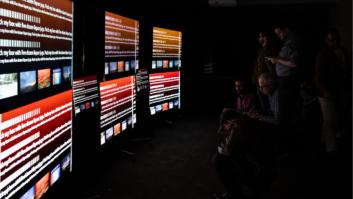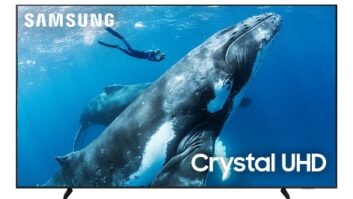Much has been made on this site and elsewhere over the trend of “cutting the cord”, which is when consumers (your clients) wean themselves off the mother’s milk of cable or satellite reception. The consumer cuts the cord by looking to other services and forms of delivery for video programming. Be it Netflix, HuluPlus, Amazon On Demand, subscription to sports league owned services (MLB, NHL, NBA, NHL or college associations such as Pac-12 TV). To many pundits, it is the direction “TV” is going.

On the other hand, if you want local news and sports, high-profile sports and entertainment, “water-cooler” programming such as the top reality and competition shows and similar there is still no substitute for “OTA”, or over-the-air stations. Of course, in most cases your clients will not actually get those stations off-air, but instead depend on cable or satellite to deliver them.
Unless, that is, if you or your clients rely on cable service from Time Warner Cable and live in an area such as NY, LA, or Dallas-Fort Worth where there is a CBS Owned & Operated (“O&O”) station. For reasons that would take an article all by themselves, Time-Warner has had to pull the CBS stations and Showtime from their systems. Try to tune to “Channel 2” in LA or NYC, and you get “Starz Kids” as a “courtesy.” Try to watch -Showtime or other CBS-owned stations (KCAL-9 in LA) and all you get is a slide explaining the situation. Initially one of the suggestions in the slides was to view CBS programming via cbs.com, but to really stir the pot, anyone using Time Warner Cable’s broadband service to access that web site eventually found video streaming blocked there as well.
Looking to watch pre-season Jets games in NYC? Tracking the amazing win streak of the Dodgers when the game is on KCAL? As they say in New York, if you use TWC for off-air, FUHGEDDABOUTIT! That’s right. Instead of you cutting the cord on the cable company, they are cutting the cord on you!
While the two media titans battle it out in competing ads and on-screen promos, the real question is what are the workarounds? Of course, the first part of that is an off-air tuner and antenna. The former can come in a TV, but don’t forget to do what is necessary to make digital audio connections to the audio system and to re-program universal remotes and control systems as needed. This disruption is a bit of disintermediation that you may have to work through differently for each client’s setup with regard to input switching and channel selection.

Of course, for front-projection displays there typically isn’t a tuner and even when using the tuner in a TV for the missing CBS off-air station, you don’t have DVR capability. In these cases you have to look a bit further for the options. Easiest is to quickly put in an inexpensive off-air tuner of the type popular during the initial phases of the DTV switchover a few years ago. They are cheap, but only have analog AV outputs that you have to make certain newer systems can handle. You’ll also have to go back to dealing with 4:3, instead of 16:9 aspect ratio for the analog output, so adjust systems accordingly.
Lack of the cable DVR to time-shift that sporting event while the client is out at dinner is another story. There, a number of options exist. Channel Master had an OTA-DVR, and while it is out of production you still may be able to pick one up. brite-View also has a an off air/clear QAM DVR that could also serve simply as a tuner for PTVs thanks to its HDMI output. If you look hard you may even be able to find DVD recorders with ATSC tuners previously made by Magnavox and Panasonic. In systems where a PC or Mac is connected to the display, you can easily add off-air reception with an ATSC tuner “dongle.”
Where a “last-generation” iOS product with the 30-pin connector is in the system an interesting possibility is one of the Dyle receivers from Escort, Belkin, or Elgato provided that the station that is no longer on the cable transmits a separate Dyle signal; these are NOT ATSC off-air tuners. The CBS stations in NY and LA do not have Dyle counterparts, but the one in Dallas-Ft. Worth does.
At the top end, TiVo’s Premiere models have OTA tuners in addition to CableCard capability for use with digital cable, but make certain that you provide the “Premiere” models, not the newer “XL” or “Elite” models as they are for digital cable only and, while they are great products, they won’t help you in this situation.
Speaking of TiVo, it is worth noting that their EPG updates have de-listed the affected CBS stations and pay services, removing them from all generations of TiVo DVS in the affected areas. Since this was done automatically without any intervention from your clients one hopes that they will be similarly re-instated when this nonsense is over. It’s something you should check to make sure of with impacted clients when the time comes just to make sure all channels that were removed are added back.
The bottom line in finding a tuner that can receive the off-air ATSC stations isn’t as hard as it might appear if you do your homework not only for the device, itself, but for the connection, programming, and configuration work that will be needed.
The other thing you’ll need is an antenna, something not always present in modern installations. The proper selection and installation of an antenna should be part of your designers’ and installers’ skill sets these types of cable issues aside. What happens when the cable (or satellite) transmission goes out for another reason? What happens when regardless of the outcome of the “war” between CBS and TWC, this type of argument of retransmission consent agreements is repeated between other services or systems and other stations or networks? (Anyone who is a Dish subscriber in a market where there is a Raycom-owned station has experienced this same issue recently, and the rumor mill says ABC and its ESPN networks are in danger of being pulled from Dish later this year if negotiations go south.)
Given time and the ability to run cables where they need to go, an outdoor antenna is always best, and there are many to choose from. When that isn’t practical outside the home, a compromise is using an outdoor antenna in the attic. Or, the easiest temporary solution is to hook a decent indoor antenna to the TV or other device described above. Terk, Mohu, Antennas Direct, and others have a variety of models. My family’s using the Terk HDTVi, once sold as the Silver Sensor with our main TV to watch the Dodger games, and it works perfectly in our location in LA about 25 miles from the KCBS-TV tower on Mt. Wilson. In another room we use a Mohu SkyHD or Antennas Direct ClearStream, both of which are really meant for in-attic or outdoor use, respectively, but propped at the top of a shelf and properly oriented they also do the trick.
Where the place needing off-air reception is a bit closer to the station’s transmitter Mohu’s flat-sheet Leaf is a great temporary choice for these sorts of blackouts, even better when the version with their “Jolt” external amplifier is in-line.
The ultimate antenna, at least for those in the NYC area, is Aereo. Here the antenna is linked to a warehouse somewhere in Brooklyn and the off-air signals reach the consumer via an IPTV type connection. Aereo is also a story unto itself, but an interesting option it is. We’re looking forward to trying it out if and when it reaches LA.
The bottom line for all of this is that as the economics of television broadcasting point to these sorts of “reverse cord cutting” blackouts becoming more commonplace. Sooner or later TWC and CBS will reach some sort of agreement–perhaps they may already have by the time you read this. However, when other stations and networks’ agreements with other cable companies, satellite services, and other systems such as FIOS and U-Verse come up for a renewal there is no guarantee that the same thing won’t happen again. You need to be prepared to take care of your clients the next time this happens.
I’ve hung the premise of this blog on the notion that someone is cutting the cord on a station or program service without the consumer having any say. Again, get used to that. On the other hand, when these things get settled, you can bet that cable (or other program delivery service) bills will eventually go up. That is when the more conventional definition of cord cutting may once again take prominence. You can bet that my cable bill will go up as a result of this, and I’ll consider cutting cords and simply replacing them for OTA with the antennae now in place. Can you say the same for the systems you take care of? Hopefully these hints will help you to do that.

.
Sherman Oaks, CA-based editorial contributor Michael Heiss is a respected technology consultant and CEDIA Fellow.







